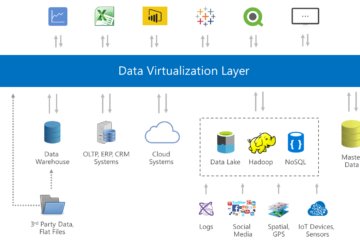Maximizing Returns with Minimal Investment: A Guide for SMEs to Adopt Generative AI and Machine Learning
In today’s fast-paced digital landscape, Generative AI and Machine Learning (ML) offer immense potential for businesses to enhance efficiency, drive innovation, and improve customer experiences. However, many small and medium-sized enterprises (SMEs) face challenges when it comes to investing in the necessary hardware and software, especially if they lack a tech background. This article provides practical solutions for SMEs to adopt these technologies with minimal investment while achieving significant returns.
![]()
Understanding the Landscape: Why SMEs Should Embrace AI
- Increased Efficiency: AI technologies can automate repetitive tasks, allowing employees to focus on higher-value activities.
- Enhanced Decision-Making: AI provides data-driven insights that can lead to better strategic decisions.
- Cost Savings: By streamlining operations, businesses can reduce overhead costs and improve profitability.
Steps for SMEs to Get Started with Generative AI and Machine Learning
1. Identify Business Needs and Goals
Before diving into AI technologies, SMEs should identify specific business needs or challenges that AI can address. For instance, a retail business might want to enhance customer service, while a manufacturing company may seek to optimize supply chain management.
2. Leverage Cloud-Based Solutions
Many cloud providers offer scalable AI solutions that require minimal upfront investment. Services like Amazon Web Services (AWS), Microsoft Azure, and Google Cloud provide pre-built models and tools for both GenAI and ML, allowing businesses to start small and scale as needed.
Use Case:
A local restaurant could utilize cloud-based AI chatbots for customer inquiries and reservations, allowing them to enhance customer engagement without investing in extensive hardware or software.
3. Utilize No-Code and Low-Code Platforms
No-code and low-code platforms are excellent options for businesses without a tech background. These platforms provide user-friendly interfaces that enable non-technical users to build and deploy AI models with ease.
Use Case:
A small e-commerce store can use a low-code platform to create personalized email marketing campaigns based on customer behavior without needing deep programming knowledge.
4. Collaborate with AI Startups or Consultants
Partnering with AI startups or hiring consultants can provide SMEs with the expertise they lack. These professionals can help tailor solutions to specific business needs, ensuring effective implementation without requiring extensive internal resources.
Use Case:
A small logistics company could hire a consultant to implement a predictive maintenance model for their delivery vehicles, reducing downtime and repair costs.
5. Focus on Data Quality Over Quantity
While having a robust data warehouse or data lake is ideal, SMEs can still harness AI with smaller datasets. Focusing on the quality and relevance of data can often yield better results than relying on large volumes of irrelevant information.
Use Case:
A boutique clothing store can use customer feedback and purchase data to generate personalized recommendations for shoppers, enhancing customer experience even with limited data.
6. Start with Pilot Projects
Implementing pilot projects allows SMEs to test AI solutions on a smaller scale before making larger investments. This iterative approach enables businesses to assess the effectiveness of the technology and make necessary adjustments.
Use Case:
A small fitness center could pilot an AI-driven scheduling system for classes, analyzing usage patterns to optimize class times and improve member satisfaction.
7. Foster a Culture of Learning
Encouraging employees to upskill in AI technologies can help businesses maximize their investment. Online courses, webinars, and workshops can provide valuable knowledge without the need for formal education in computer science.
Use Case:
An SME could enroll team members in online courses about GenAI applications in marketing, allowing them to create engaging content and campaigns based on AI-generated insights.
Conclusion: Strategic Adoption for Sustainable Growth
By taking a strategic approach to adopting Generative AI and Machine Learning, SMEs can overcome the challenges of investment and expertise. With the right tools, partnerships, and a focus on quality data, businesses can reap the benefits of these technologies, driving growth and efficiency while minimizing costs. Embracing AI doesn’t have to be daunting; with the right mindset and resources, SMEs can thrive in the digital age.


